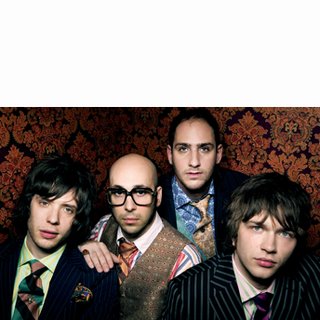OK GOes to the VMAs
I was very happy to see OK Go performing live at MTV's VMA awards. It just, um, goes to show, however, not just how much better the original video is, but how much more "live" it seems, too. The live broadcast kept switching to different cameras. Oh, boy! An overhead shot, so we can see that "OK GO" is written on the treadmill mats. Oh, boy! A view over the shoulders and around the heads of the audience! I know it's MTV, but choreography is an art of movement and space. And I know it was live, really happening as we watched, but the mosaic quality of all of the different cuts makes us feel as though it was compiled. If you use the camera to break up the dance into fragments and glimpses, it becomes about the camera, not the dance. The original video was filmed like a Fred Astaire dance number -- in one take, the camera standing still at the proscenium level, giving the audience the best seat in the house.  Ironically, it feels more "live" than the live broadcast because it is so indisputably done in one take. The video includes a mistake that the live performance did not, and that, too, gives it more of a real-time, flying-without-a-net quality.
Ironically, it feels more "live" than the live broadcast because it is so indisputably done in one take. The video includes a mistake that the live performance did not, and that, too, gives it more of a real-time, flying-without-a-net quality.
The same applies to sports. The tricked-up basketball scenes in this week's release, "Crossover." The flurry of quick cuts, with some shots sped up and others slowed down, obliterates any interest value in the ability of the players to pass and score. It might as well be done in CGI. When we watch basketball, we want the camera to give us the best seat in the house so we can see the player shoot and score. We don't want a kaleidoscope of fractured images. Of course, when we watch a movie, we also want good dialogue, fresh storylines, and interesting characters, none of which appear in "Crossover," but that's another story.




No comments:
Post a Comment